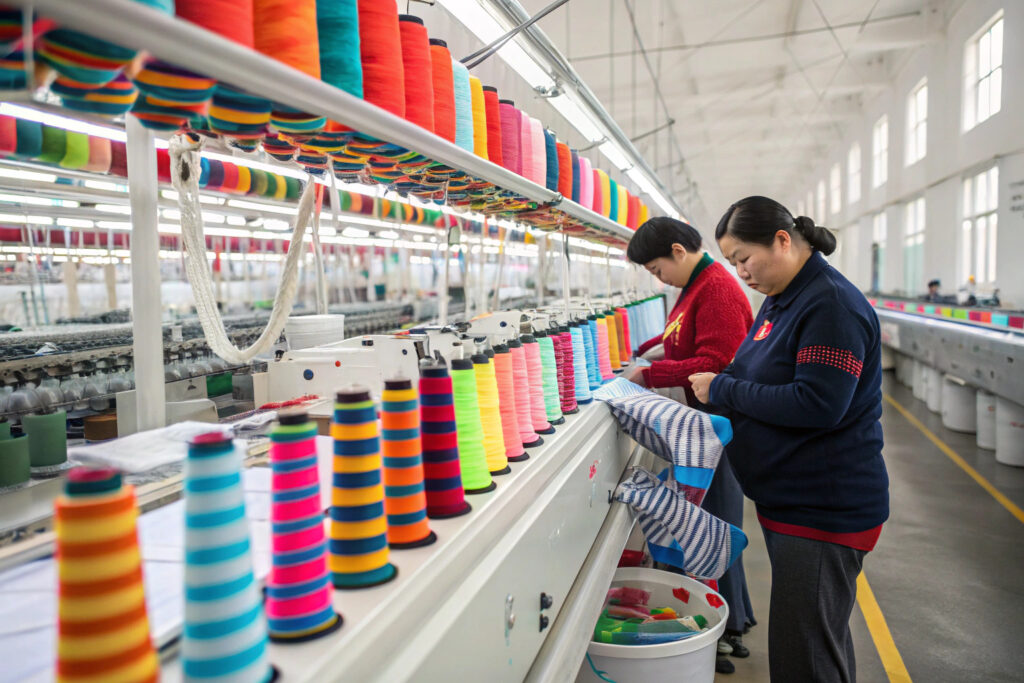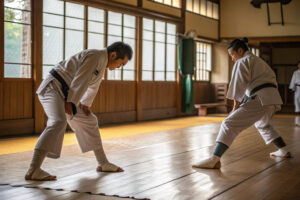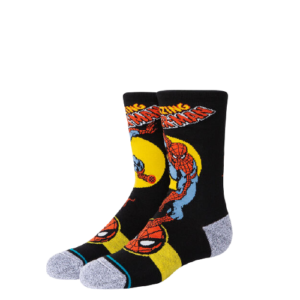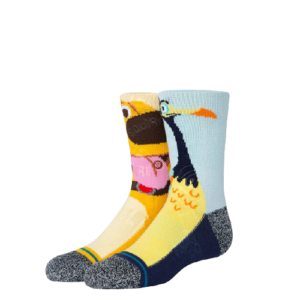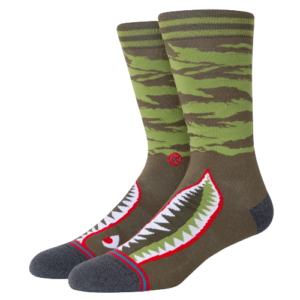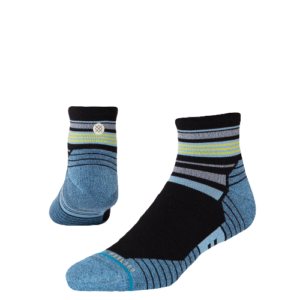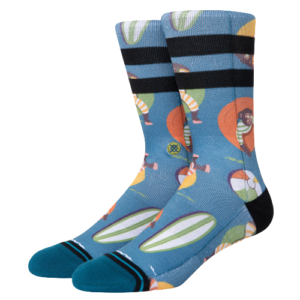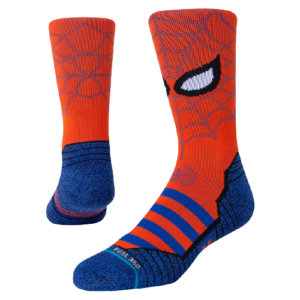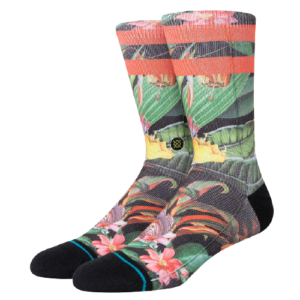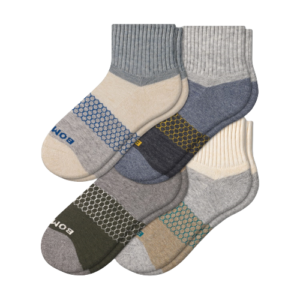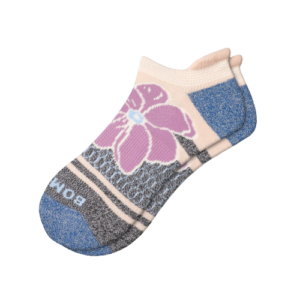When you have a business idea that needs custom socks, it can be frustrating to see huge order requirements. Many suppliers ask for thousands of pairs per style, which is too risky for small businesses. You want flexibility without losing quality or paying sky-high prices. But how do you make it happen?
The truth is—sourcing custom socks with low MOQs is possible if you know where to look and what to ask. Today, I’ll share the strategies we’ve learned in over a decade of producing socks for global brands, from startups to household names.
If you follow these steps, you can save money, speed up delivery, and still get socks that make your brand proud. Let’s explore how.
What Are the Best Materials for Low MOQ Custom Socks?
Small-batch production works best when you choose the right materials. The wrong fabric can cause delays, minimums to jump, and quality to drop. Over the years, I’ve learned that certain yarns and blends make it easier to produce in smaller runs without compromising comfort or durability.
By focusing on flexible materials and sustainable options, you can appeal to your target customers and keep your production nimble. Plus, material choice is a major factor in MOQ negotiation.
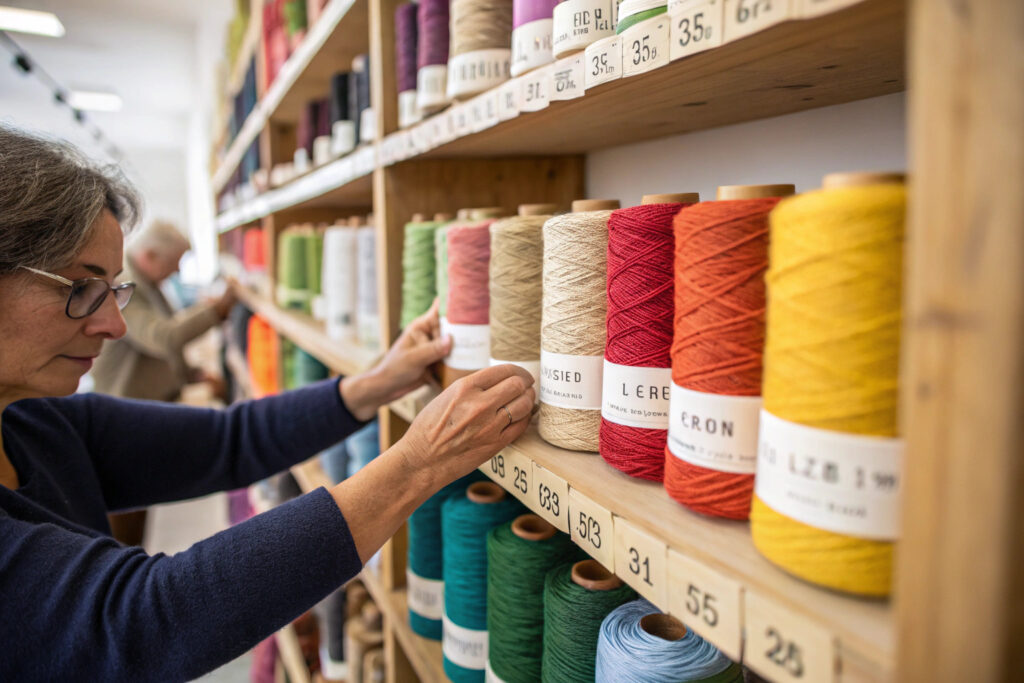
Why Does Material Choice Affect MOQ?
Material availability directly impacts your supplier’s flexibility. If they have to import special yarns, the MOQ might increase. For example, suppliers working with organic cotton or bamboo yarn often keep them in stock because demand is steady. On the other hand, exotic blends or rare colors may require full-dye lots, which can push up the minimum.
A smart approach is to ask your supplier about their “ready stock” yarns. Using in-stock colors and fibers allows them to start production faster and in smaller batches.
Which Fabrics Are Best for Small-Batch Socks?
For most brands, I recommend organic cotton for casual wear, combed cotton for premium dress socks, and bamboo or Tencel™ for eco-focused lines. Merino wool works well for sports and winter socks but might have higher yarn MOQs unless sourced from local mills. You can also consider recycled polyester for performance socks, as it’s widely stocked due to global sustainability trends.
If you match your designs to widely available yarns, you’ll reduce risk and control costs.
How to Find Reliable Low MOQ Sock Manufacturers?
The biggest challenge in sourcing low MOQ socks is finding a supplier who takes small orders seriously. Many factories focus on big-volume clients, so small brands get pushed down the priority list. I’ve seen entrepreneurs lose weeks chasing quotes from suppliers who won’t really commit.
The key is to target manufacturers with proven experience in flexible production and custom design work. You want a partner who sees small orders as an investment, not a burden.
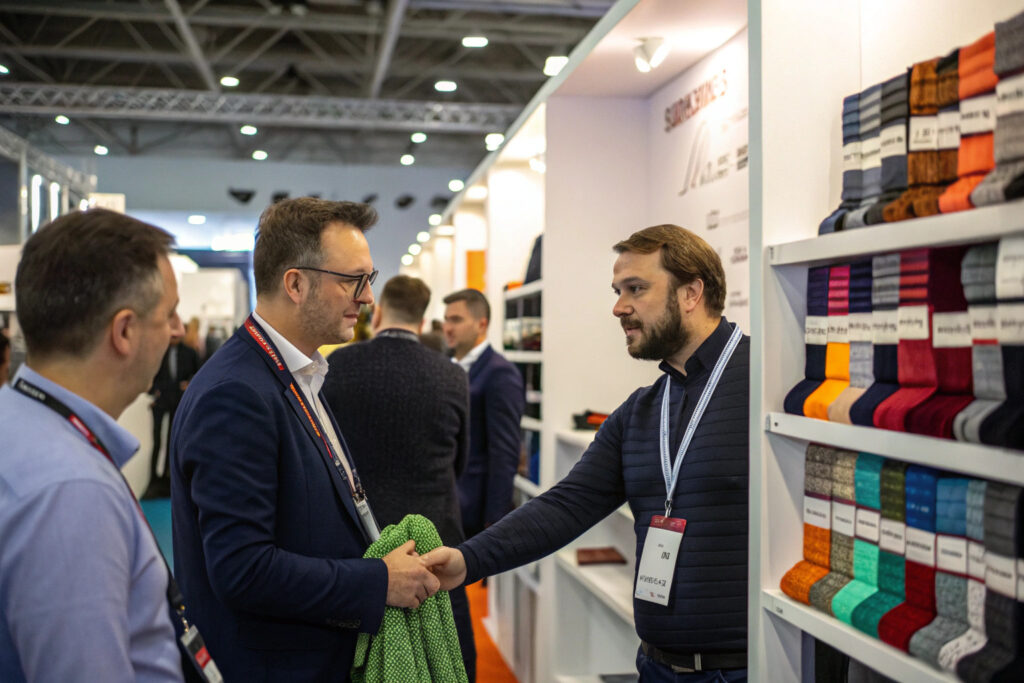
Where Can You Meet Low MOQ Suppliers?
The fastest way is to attend sourcing events like Canton Fair or Magic Las Vegas. These events let you meet suppliers face-to-face and check their samples on the spot. Another option is verified platforms like Alibaba or Global Sources—but always filter for “low MOQ” and request clear terms before sending designs.
Trade shows are also great for spotting suppliers who specialize in niche designs or sustainable production, which often means more flexibility in order sizes.
What Should You Check Before Choosing a Supplier?
Ask about their sample lead time, yarn inventory, and machinery capabilities. A supplier with both circular knitting machines and jacquard machines can handle more design variations without needing high MOQs. Also, check if they work with third-party labs like SGS for quality testing—this shows they care about meeting standards.
Finally, confirm payment terms and whether they can consolidate shipments if you order different styles together.
What Is the Average Cost for Small-Batch Sock Production?
.
Cost is where many small brands get surprised. While low MOQ means fewer units, the per-pair cost can be higher because the setup cost spreads over fewer socks. But that doesn’t mean small orders aren’t profitable—you just have to budget smart.
We help our clients plan production so their margins still work even with smaller batches.
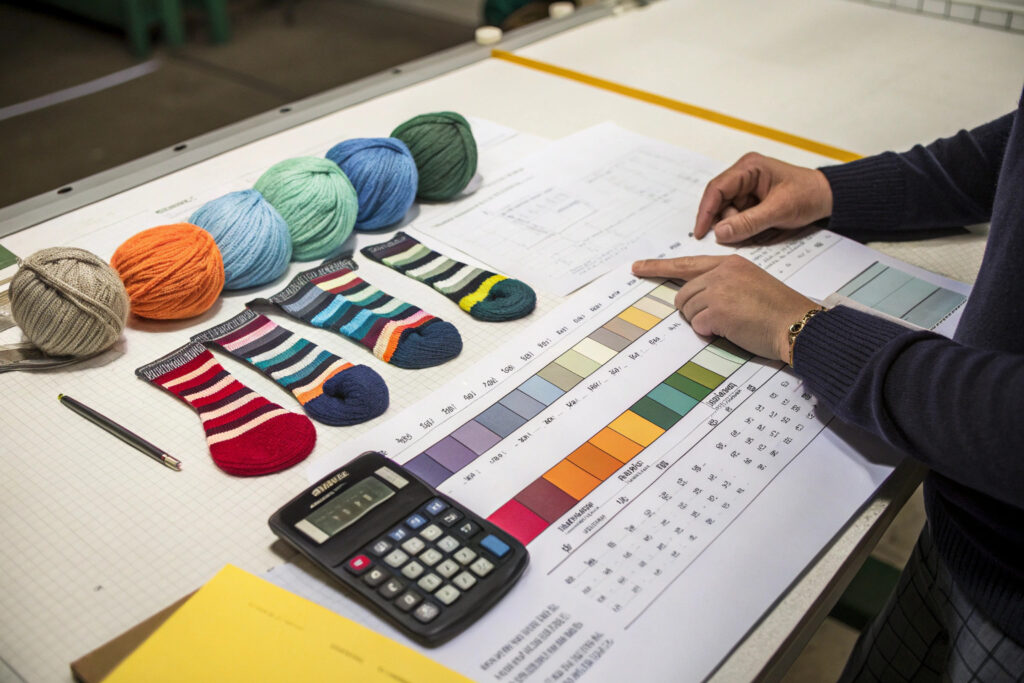
How Much Should You Expect to Pay?
For basic cotton crew socks, a low MOQ order (100–500 pairs per style) might cost $2.50–$4.00 per pair, depending on material and design complexity. Premium materials like merino wool can push that up to $5–$7 per pair. If you add features like compression zones or anti-slip grips the cost increases due to extra knitting steps.
Shipping, packaging, and duties—especially for US imports—add to the landed cost, so always calculate those before pricing your retail.
Can You Lower Costs Without Sacrificing Quality?
Yes—by combining orders for multiple designs, using in-stock yarn colors, or simplifying the packaging. Many suppliers will give a better rate if you hit their “production sweet spot,” which is often around 500–800 pairs total across styles. Also, choosing efficient designs (fewer color changes, simpler patterns) can cut knitting time and reduce waste.
Websites like Freightos can help compare logistics rates, so you can avoid overpaying for shipping.
Can Low MOQ Custom Socks Still Meet High Quality Standards?
Many new brands worry that small orders mean cutting corners on quality. That’s not true—if you work with the right supplier. We use the same machines, yarns, and testing for both small and large clients. The difference is simply in batch size.
By setting clear quality specs and monitoring production closely, you can get socks that match your vision, even for small runs.

What Quality Checks Should You Require?
Ask your supplier for full test reports, including colorfastness, shrinkage, and composition analysis. Reputable manufacturers often have in-house labs or work with certified testing bodies like Intertek. Also, request photos and videos during production so you can spot issues early.
We tag every batch with QR codes so clients can track testing results online—a process that ensures transparency and trust.
How Can You Protect Your Brand Reputation?
Always inspect samples before bulk production. This is where many small brands fail—they approve a design based on a digital mock-up instead of a physical sample. In small-batch production, every pair counts, so make sure the fit, feel, and colors are perfect before giving the go-ahead. Tools like Trello or other project management apps can help you track every production step.
When you deliver quality from day one, even small orders can build long-term customer loyalty.
Conclusion
Sourcing custom socks with low MOQs is not just possible—it’s an opportunity for small brands to launch quickly, test the market, and grow without overcommitting inventory. By choosing the right materials, finding flexible suppliers, managing costs, and enforcing quality control, you can get premium socks that make your brand stand out.
If you’re ready to create your own line of socks, we at Shanghai Fumao can help from concept to delivery. Contact our Business Director Elaine at elaine@fumaoclothing.com to start your small-batch production today.

